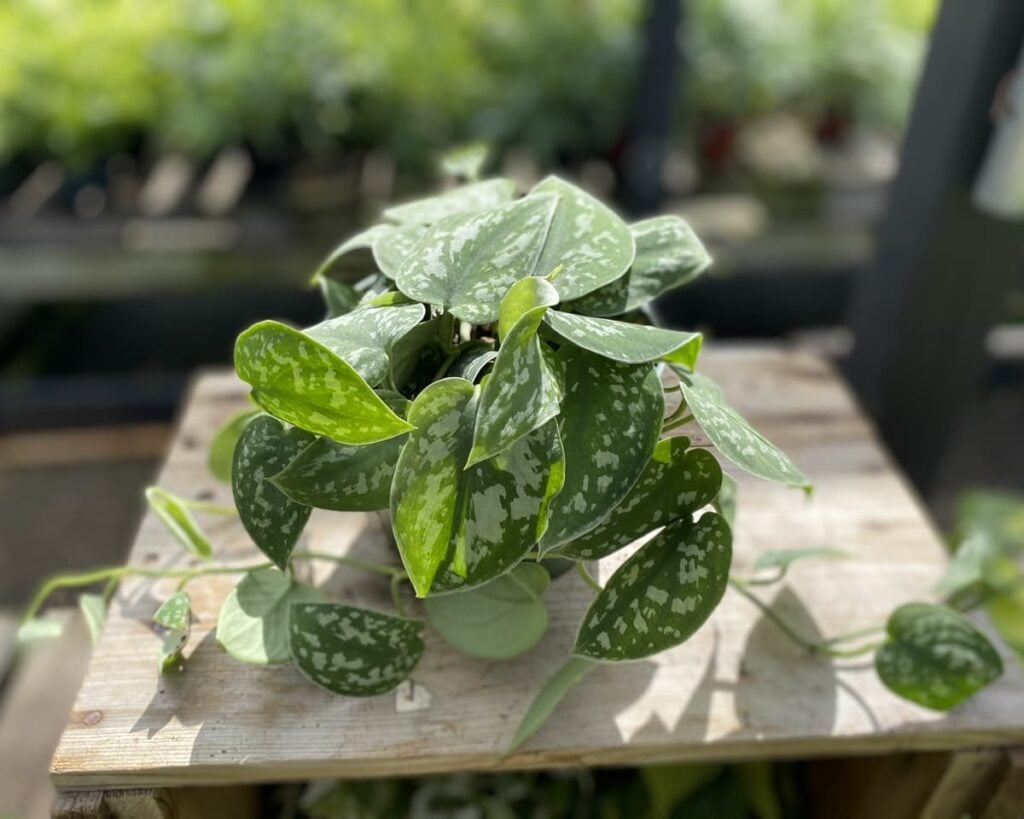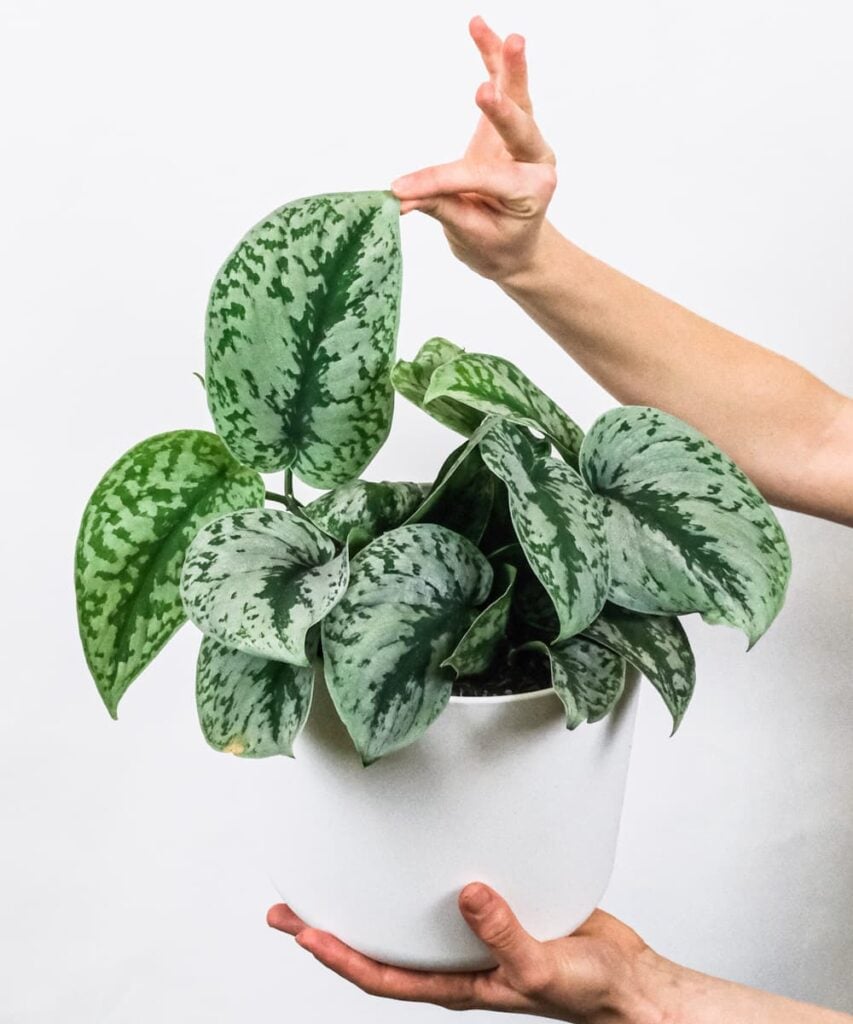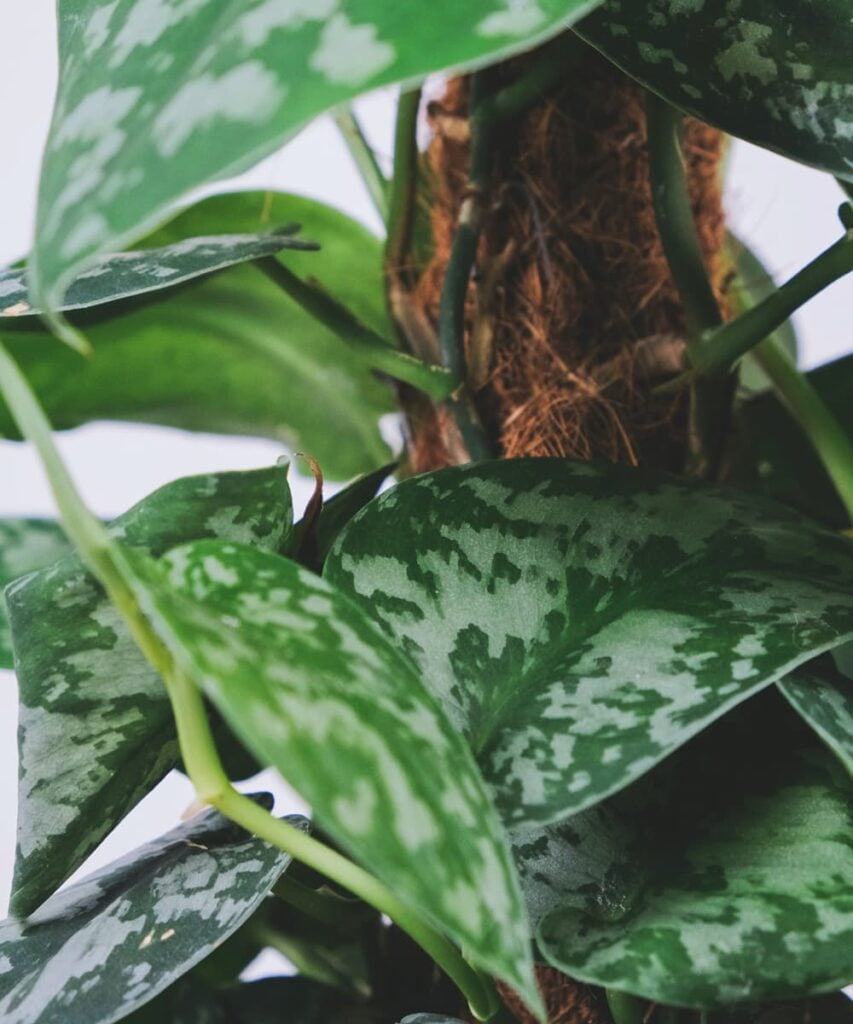Everything You Need to Know about Scindapsus Care

Scindapsus is one of the easiest houseplants to grow. It is a member of the Arums family. They are evergreen tropical vines that are not cold-tolerant. That’s why it is suggested to grow these plants indoor. They have heart-shaped leaves which have silvery grey splotches which make them look almost shiny and adds to the visual appeal of the plant. The intensity of the variegation depends on the cultivar. Check out our Scindapsus collection.
Scindapsus Care
These green and silver vining plants are easy-to-grow houseplants. In addition to the routine care of watering and fertilizing, an extra step you can take to improve its appearance is snipping off any damaged or dead leaves and pruning when the vines are growing too long and becoming sparse. Let’s discuss Scindapsus care in details.
Light
Scindapsus prefers bright but indirect sunlight. When exposed to full direct sun, its leaves will lose their variegation and get scorched. If you place the plant near a window with direct sunlight, it will require a curtain to protect it from direct sunlight.
Soil
Scindapsus grows best in a fertile potting mix that has excellent drainage. The ideal potting soil for Scindapsus should let water drain quickly. This is essential for the plant’s healthy growth as waterlogged soil causes roots to rot. However, the soil area around the roots should be constantly moist.
Water
When watering Scindapsus, the key is to avoid overwatering which might lead to yellow leaves and the vine wilting.
Water only when the top two inches of the soil feels dry. Poke your finger into the soil to check. Water slowly and deeply with room-temperature water until you see water seeping out of the drain holes.

Temperature and Humidity
Scindapsusis a tropical plant, which means it needs warmth and humidity. The ideal growth temperature ranges from 18 to 29 degrees C. At a lower temperature, it will suffer cold damage and die. In dry air, the leaf tips can turn brown.40 to 50% relative humidity around your plant is ideal. You can increase the humidity by placing the pot on a tray filled with pebbles and water, but in a way that the roots are not exposed to the water.
Misting Scindapsus to increase humidity is not recommended because the aerial roots also absorb moisture so it might result in overwatering.
Fertilizer
Scindapsus benefits from fertilizing every four weeks during the growing season. Use a balanced houseplant fertilizer, diluted to half-strength. Fertilize the Scindapsus pictus monthly after regular watering to encourage healthy leaf growth. Hold off fertilizing during late fall and winter when the plant doesn’t grow.
Don’t over-fertilize any tropical vining plants as it can kill the plant. Just run water through the soil for a few minutes to rinse excess fertilizer.

Common Problems
- Symptom: Root rot
Cause: Excess moisture/over-watering. - Symptom: Yellow leaves
Cause: Direct sunlight. - Symptom: Curly leaves
Cause: Over-watering/under-watering. - Symptom: Brown Leaves
Cause: Too much intense sunlight/not enough moisture.
Scindapsus will grow faster when indoor conditions are ideal. Ensure the trailing plant is in a warm, bright room, and you water it only when the soil dries. Encourage fast, healthy leaf growth by keeping humidity relatively high and protecting the plant from direct sunlight.
Scindapsus are easy to maintain plants with attractive qualities that make them one of the best houseplants.
Scindapsus care reference: TheSpruce
